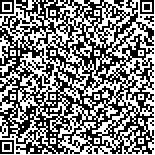| 摘要: |
| [目的]乡村振兴战略将乡村旅游作为我国农村扶贫的重要手段,而旅游业的发展对乡村用地格局产生了深远影响。对典型城郊旅游村庄西庄村的用地格局演变展开研究,识别当前旅游用地模式中存在的问题,对合理划定村级“三生空间”和推动乡村旅游转型升级具有重要意义。[方法]文章基于Google Earth高精度遥感图像,运用参与式农村评估法(PRA)、ArcGIS空间分析和马尔科夫模型,对1985—2017年西庄村用地格局演变进行定量研究。[结果]在旅游业影响下,西庄村旅游用地和其他商服用地持续扩张,耕地、园地和林地持续缩小; 用地功能由传统的农业生产和居住向旅游用地和其他商服用地的多功能转变,且各阶段转变的主导类型不同; 以旅游用地为主的建设用地扩展强度呈倒“U”型趋势,不同阶段表现为渐进式蔓延扩展、爆炸式多点扩展、填补式内涵挖潜和稳定有序扩展模式; 旅游区位优势、旅游市场需求、先锋农户带动及政府乡村旅游政策是典型城郊旅游乡村用地格局演变的主导因素。[结论]乡村旅游业发展应结合村级“三生空间”划定,科学划定产业用地空间,控制旅游用地无序扩张,促进乡村空间有序发展。 |
| 关键词: 土地利用乡村旅游空间演变乡村振兴动力机制 |
| DOI: |
| 分类号:F30124 |
| 基金项目:国家自然科学基金项目“喀斯特地区土地利用变化背景下土壤碳库变化特征与稳定机制研究”(41877034); 国家自然科学基金项目“西南喀斯特生态移民区土地利用与生态系统互动效应及调控机制研究——基于农户经济行为视角”(41171440) |
|
| MICRO SCALE ANALYSIS ON THE EVOLUTION OF RURAL TOURISM LAND USE PATTERN* ——A CASE STUDY OF XIZHUANG VILLAGE IN BEIJING |
|
Hu Keke1, Qin Fenglei1, Hu Yecui1,2
|
|
1.Land Science and Technology School,China University of Geosciences, Beijing 100083, China;2.Key Laboratory of Land Consolidation and Rehabilitation, Ministry of Natural Resources, Beijing 100035, China
|
| Abstract: |
| The rural revitalization strategy takes rural tourism as an important means of poverty alleviation in rural areas, and the development of rural tourism has a far reaching impact on the pattern of rural land use. Studying the evolution of land use patterns of Xizhuang village, a typical tourism village in the fringe of the metropolis, and identifying the existing problems in the current rural tourism land use pattern are of great significance to reasonably delineate the village level ecological production living spaces and promote the transformation and upgrading of rural tourism. Based on the high precision remote sensing images of Google Earth, a quantitative study on the evolution of land use patterns in Xizhuang village from 1985 to 2017 was conducted by using the Participatory Rural Appraisal method, ArcGIS spatial analysis method, and Markov model. The results showed that under the influence of tourism, the tourism land and land for other commercial services in Xizhuang village continued to expand. In the meanwhile, farmland, garden and woodland were eroded. The functions of land use in Xizhuang village changed from the traditional agricultural production and residence to the multi functional land use for tourism and other commercial services, and the leading types of land use function transformation were different in each stage. The expansion intensity of construction land consisting mainly of tourism land presented an inverted "U" trend, which was manifested as progressive expansion, explosive multi point expansion, filling type expansion, and stable and orderly expansion in each stage. Superior tourism location, tourism market demand, the leading role of pioneer farmers, and government policies on rural tourism were the leading factors for the evolution of land use patterns of typical suburban tourism villages. The development of rural tourism should combine with the demarcation of village level ecological production living spaces, scientifically delineate the industrial land, and control the disorderly expansion of tourism land, so as to promote the orderly development of rural space. |
| Key words: land use rural tourism spatial evolution rural revitalization driving mechanism |

